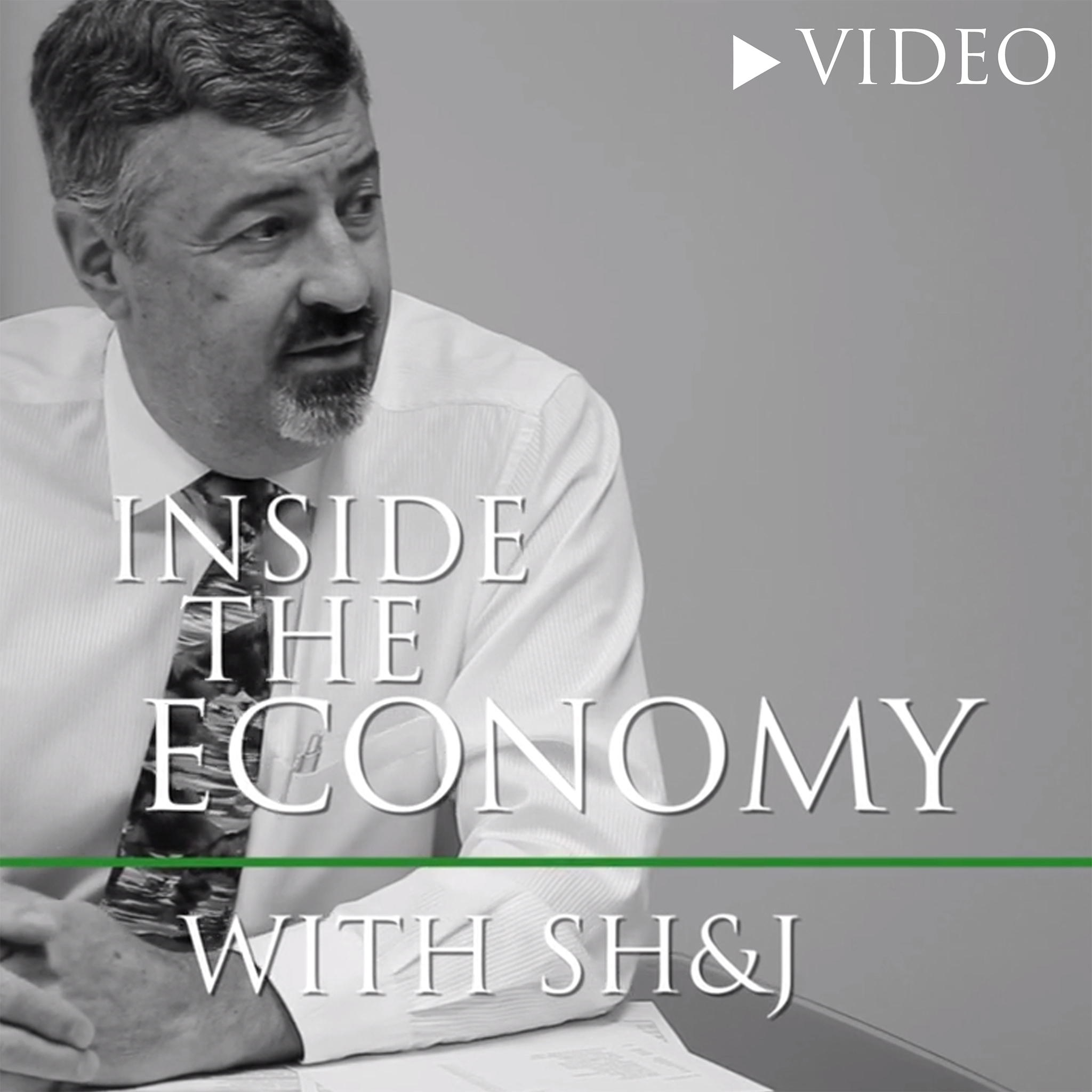Episodes

Wednesday Jun 25, 2025
Inside the Economy: Housing, Immigration, and Treasuries
Wednesday Jun 25, 2025
Wednesday Jun 25, 2025
This week on Inside the Economy, we explore the housing market, immigration, and the Treasury market. Mortgage rates have been hovering around 7%. Has the heightened level of interest rates negatively impacted existing home sales? New construction of single-family homes stands at over 900,000; how does that compare to multifamily construction? In other news, U.S. immigration trends for green card holders and temporary visa recipients have remained steady or slightly increased, but has immigration among other foreign nationals declined, possibly due to recent policy shifts? Meanwhile, the 30-year yield has begun to creep down from its peak in May. Could Treasuries still be considered a safe haven for both domestic and foreign investment? Tune in to learn more!
Key Takeaways:
- Head CPI Inflation at 2.4% (YOY)
- 30-year Mortgage rate at 6.81%
- Existing Home Sales at $4M in May

Wednesday Jun 11, 2025
Inside the Economy: Stock Market Performance, Corporate America, and Debt
Wednesday Jun 11, 2025
Wednesday Jun 11, 2025
This week on Inside the Economy, we address stock market performance, corporate America, current trade and tariff developments, and government debt. The S&P 500 posted its best May performance in 35 years, challenging the old saying, “Sell in May and go away.” Which companies led the index during this rally? How have capital expenditures evolved among large technology firms in recent years? We also explore how Asian economies have significantly increased their net purchases of U.S. bonds and stocks since 1997—a trend largely driven by their export relationships with the U.S. and subsequent investments in U.S. Treasuries. Has this pattern changed since the onset of trade tensions? Finally, as tariffs increase the cost of imported goods and services, could businesses begin passing those costs on to consumers? Tune in to learn more!
Key Takeaways:
- Unemployment at 4.2%
- 30-year bond yield at 4.95%
- S. Debt-to-GFP ratio is 123% as of April 2025

Thursday May 29, 2025
Inside the Economy: Tariffs, European Union, Interest Rates, and Markets
Thursday May 29, 2025
Thursday May 29, 2025
This week on Inside the Economy, we discuss tariffs, trade relations with the European Union, interest rates in the U.S. and abroad, and global stock market performance. U.S. Customs duties reached an all-time high, generating $25.5 billion in revenue in May. What sectors are the primary contributors to this surge? In recent developments, the U.S. and the E.U. have begun discussions on future trade agreements. As our largest trading partner—accounting for roughly 5% of U.S. GDP—what is currently the largest import from the E.U.? Turning to the bond market, the 30-year Treasury yield has hit both a yearly and decade high. While Moody’s recent downgrade played a role, what other factors might have contributed to the spike in yields? Finally, we explore market expectations for interest rate changes. How much easing is currently priced in based on 12-month federal funds rate futures? Tune in to learn more!
Key Takeaways:
- 30-year bond yield at 5.03%
- Head CPI Inflation at 2.3% (YOY)
- Bank of Japan Policy Rate at .50% in May

Wednesday May 14, 2025
Inside the Economy: Wages, Inflation, and Trade Agreements
Wednesday May 14, 2025
Wednesday May 14, 2025
This week on Inside the Economy, we dive into the current state of wage growth, job prospects, inflation trends, Federal Reserve activity, and emerging trade agreements. Wage growth, which experienced downward pressure following the Fed’s interest rate hikes starting in 2022, appears to be stabilizing. Currently, the average monthly wage per U.S. worker is around $7,000. How does this figure compare with wages in the E.U. and other nations? On the inflation front, the cost of borrowing (interest rates) exceeds the rate of inflation (CPI), a potentially positive signal for the economy. Is there mounting pressure on the Federal Reserve to cut rates this summer? Meanwhile, trade negotiations are gaining momentum. How significant is it for the U.S. to secure a balanced trade agreement with China? What elements of the recent E.U. deal stand out as particularly beneficial for the U.S.? And which other countries might be priorities in America’s trade strategy? Tune in to learn more!
Key Takeaways:
- Core PCE Inflation at 2.6% (YOY)
- 10-year bond yield at 4.37%
- ISM Services at 51.6

Wednesday Apr 30, 2025
Inside the Economy: New Tariffs, S&P 500, and Trade Issues
Wednesday Apr 30, 2025
Wednesday Apr 30, 2025
This week on Inside the Economy, we take a closer look at the impact of new tariffs, the S&P 500, and ongoing trade issues—particularly with China. Revenue from customs duties, commonly referred to as tariffs, has reached an all-time high since record-keeping began. While this revenue may soon peak and begin to decline, it is not projected to disappear entirely. In which countries or industries could tariffs remain elevated? Turning to markets and the S&P 500, earnings and revenues are not setting records, but healthcare and other sectors have been trending upward. Why are industrials moving lower? Could the market currently be in oversold territory? Trade tensions also continue to escalate, particularly between the U.S. and China. How does China’s dependence on exports with the U.S. compare with that of other trading partners. Tune in to learn more!
Key Takeaways:
- New Orders for Durable Goods up 9.1%
- Custom Duties reach $15B in revenue in April
- Manufacturing Production Output index at 101.1 in March

Wednesday Apr 16, 2025
Inside the Economy: Consumer Economy, Tariffs, Economics of Russia in Europe
Wednesday Apr 16, 2025
Wednesday Apr 16, 2025
This week on Inside the Economy, we analyze the strength of consumers in the economy, trade and tariffs, and economics of Russia in Europe. The economic report is still providing minimal worry signs for the current state of the economy. Consumer spending ticked down slightly in February—but has generally remained on trend. What events may have impacted consumer spending in the first quarter? Tariff strategies have been implemented at higher levels than expected but have recently been scaled back. Vietnam was the first country to enter negotiations with the U.S.—what is being discussed with Scott Bessent? What other countries have started talks with the U.S.? Meanwhile, European nations are recognizing the importance of Russia’s vast hydrocarbon supply as energy costs continue to rise. How does U.K. household electricity spending compare to that of the U.S.? Tune in to learn more!
Key Takeaways:
- S. Core CPI at 2.8 (YOY)
- Unemployment at 4.2%
- Discretionary Consumer Spending increased 2.1% in February (YOY)

Thursday Apr 03, 2025
Thursday Apr 03, 2025
This week, on "Inside the Economy," we will break down the international stock markets and their outperformance compared to the US in 2025. Could this be the beginning of a long-awaited turnaround in the international markets? The Federal Reserve's preferred inflation measure showed a slight uptick in March while personal incomes also rose. Can US consumers continue to power the economy forward as they have over the past few years? Amid a market pullback and the potential for a correction in the S&P500, we review recent market volatility and how often we see corrections and bear markets. Overall, we continue to see strength in international stocks and a normalization in inflation. Tune in to learn more!
Key Takeaways:
- European stocks are beating the US by a record
- Gold, International stocks, and Fixed income are the best performers of the year so far
- Portfolio diversification appears to be benefiting investors as the S&P500 nears correction territory

Wednesday Mar 19, 2025
Inside the Economy: Consumer Attitudes and Markets
Wednesday Mar 19, 2025
Wednesday Mar 19, 2025
This week on Inside the Economy, we address consumer attitudes and market trends, specifically considering the S&P 500 entering correction territory. Revolving consumer credit as a percentage of disposable personal income is hovering around 6%, which has historically been considered a healthy level. Mortgage debt as a percentage of GDP continues to stay on track. What is the current level of foreclosures in the housing market compared to 2008? Are trends in auto delinquencies showing signs of concern? The S&P 500 has reached correction territory but may have also entered oversold territory. Could the correction be a sign of trouble, or simply volatility? Looking at the timeframe from election day to now, treasuries are now beating stocks. How might future Federal Reserve meetings impact treasuries? Tune in to learn more!
Key Takeaways:
- S. Core CPI at 3.1 (YOY)
- 30-year Mortgage rate at 6.65%
- S&P 500 1-year return of 10%

Wednesday Mar 05, 2025
Inside the Economy: Unemployment, U.S. Net Worth, and New Home Sales
Wednesday Mar 05, 2025
Wednesday Mar 05, 2025
This week on Inside the Economy, we explore unemployment and jobs, U.S. net worth by households, and the housing market. Economic data suggests a potential return to trend growth. As of January, job openings reached 7.6 million, while unemployment peaked at 6.8 million. With recent developments regarding federal job cuts, potential reductions to the Department of Defense workforce have been considered. If a select percentage of these workers are laid off, what effect could that have on national unemployment? In other news, U.S. net worth has reached $170 trillion, primarily driven by housing and market investments. How much wealth is held by the average U.S. household compared to the rest of the world? New home sales fell 10% in January, but the overall level of home sales remains high when compared to 2010-2016. How has the multifamily sector performed in recent months? Tune in to learn more!
Key Takeaways:
- Durable Goods at 3.1%
- 10-year bond yield at 4.29%
- Crude Oil at $69.47 a barrel

Wednesday Feb 19, 2025
Wednesday Feb 19, 2025
This week on Inside the Economy, we discuss the current state of the domestic consumer in relation to inflation and interest rates, the potential for a U.S. Sovereign Wealth Fund, and Europe and Asia. The media has been buzzing about an increase in year-over-year inflation. Is this necessarily bad news, or is it an adjustment in the numbers? Which inflation data point saw the biggest increase? Additionally, the current administration has proposed the idea of a U.S. Sovereign Wealth Fund, with the goal of promoting fiscal sustainability. Could monetizing the U.S.’s majority stake in gold significantly aid in the creation of the fund? Across the globe, China has seen record investment outflows, alongside a minimal amount of inbound investment. Japan, once one of China’s top partners for direct investment, has shifted its focus. Who is Japan now prioritizing for direct investment? Tune in to learn more!
Key Takeaways:
- S. Core CPI at 3.3 (YOY)
- 30-year Mortgage at 6.87%
- The U.S. holds 8.1k metric tons of Gold as of Dec. 2024

